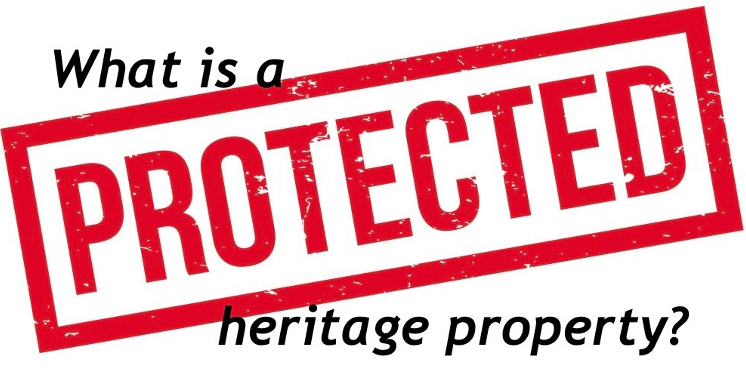
Last time we looked at what might be coming in the province’s new housing-focussed “policy instrument.”1 Now it — the proposed new Provincial Planning Statement — is here!
The new PPS (the same acronym with the word “Planning” substituted for “Policy”) is up on the Environmental Registry for public comment until June 5.2 The Ministry of Municipal Affairs and Housing expects it will be in effect by the fall.
Don’t say you didn’t see it coming: As predicted, the current cultural heritage policies in section 2.6 of the PPS 2020 have taken a major hit. The proposed new policies, found in section 4.6 of the document, substantially weaken a key part of Ontario’s heritage protection regime.3
Currently, the flagship policy for cultural heritage in Ontario says:
2.6.1 Significant built heritage resources and significant cultural heritage landscapes shall be conserved.
Until the current posting, the concern had been that the “shall be conserved” language would be watered down. That, instead of the directive, obligatory “shall”, we would get a softer, more suggestive “should” (or worse). Or that “conserved”, a defined term in the PPS, would be diluted somehow.
The good news is that hasn’t happened.4

The bad news is that the subject of the sentence has changed. “Significant built heritage and significant cultural landscapes…” is gone, replaced with:
4.6.1 Protected heritage property, which may contain built heritage resources or cultural heritage landscapes, shall be conserved.
Now “protected heritage property” is basically defined as property designated individually or as part of a Heritage Conservation District under Parts IV and V of the Ontario Heritage Act, or property with archaeological resources protected under Part VI.5
As one heritage activist remarked, the new policy is a little like saying that only heritage property that is already protected has to be protected!
What is happening here is that the whole sphere of “significant” heritage properties is being shrunk to a small remnant of “protected” heritage properties. Instead of “significant” property, which essentially encompasses all the properties in Ontario that meet the criteria for designation in Ontario Regulation 9/06, whether they have been previously evaluated or not, the new policy would direct provincial and municipal planning authorities to conserve only formally designated property and a few add-ons.
Or, to try to put this in numeric terms, the new policy would apply to only the roughly 33,000 properties designated under Parts IV and V6 — versus the many tens of thousands of additional heritage places that do, or would, qualify under the current “significant” yardstick.7 These include listed (non-designated) properties under section 27 of the OHA, properties that have been evaluated and meet the criteria but are not listed or designated, and properties that have not been evaluated but would meet the criteria if they were.8 The classic example of the latter is the unevaluated heritage building on a development site that is only evaluated as a result of a development application.

New policy = Just the tip of the iceberg, just the top of the pyramid.
The question may well be asked: Does such a bare-bones policy really meet the intent and spirit of the Planning Act, where “the conservation of features of significant architectural, cultural, historical, archaeological or scientific interest“ is identified as a “matter of provincial interest”?
Then there’s the term itself: “protected heritage property.”
The term first appeared in the Provincial Policy Statement in the PPS 2005 as part of a new policy 2.6.3, called the adjacency policy. The policy, amended slightly in 2014, currently reads:
Planning authorities shall not permit development and site alteration on adjacent lands to protected heritage property except where the proposed development and site alteration has been evaluated and it has been demonstrated that the heritage attributes of the protected heritage property will be conserved.
The proposed PPS retains the policy with sensible edits as policy 4.6.3, which reads:
Planning authorities shall not permit development and site alteration on adjacent lands to protected heritage property unless the heritage attributes of the protected heritage property will be conserved.
Fine. In all the PPS iterations “protected heritage property” means designated property, along with some additional forms of legally protected property.
Note, however, that the term “protected heritage property” leaves out other forms of legally protected property. For the most part these did not exist in 2005 when the term first appeared in the PPS adjacency policy. These include listed property under section 27 of the Act (where interim control on demolition was introduced in 2006); property subject to interim control by-laws for areas being studied for Part V designation (introduced in 2005); and property subject to interim controls where a Part IV designation has been started but not completed (goes back to 1975).
In the context of the adjacency policy, this exclusion of some forms of protected heritage property is not a big deal. Indeed it makes good policy sense to limit the policy’s application to situations where the heritage attributes of the neighbouring heritage property have been formally identified — and this generally means a property designated under Part IV or V.

But problems arise when “protected heritage property” is used in a different context, like the marquee heritage policy 4.6.1. Again, this reads:
4.6.1 Protected heritage property, which may contain built heritage resources or cultural heritage landscapes, shall be conserved.
Here imprecision, inconsistency and confusion creep in when other types of legally protected property are not included in the definition — and there seems no policy reason to exclude them.
Listed properties are by far the biggest excluded category. By the Ministry of Citizenship and Multiculturalism’s estimate there are some 36,000 listed properties in Ontario. Why ignore listed properties, which have been formally identified and protected by some 70 municipalities?
It is of course true that the listing mechanism has been greatly fettered as a result of Bill 23’s changes to the OHA. But this important tool still exists and will continue to be used. There is now even an incentive to use listing more proactively.9
In terms of a technical fix for this, one way is simply to:
- add listed property and the other excluded categories to the definition of “protected heritage property” for the purposes of policy 4.6.1, and
- use a different term such as “designated property” for the adjacency policy and define it in the current, more limited way.
We’re out of time but there are other things to note in the proposed PPS. To highlight two:
- the more restrictive meaning of “contiguous” in the adjacency policy — no more latitude for Official Plan definitions that go beyond strict contiguity
- the new policy 4.6.4 about encouraging “proactive strategies for the identification of properties for evaluation under the OHA” — what might such strategies be?
Be sure to make your comments known! The ERO deadline is June 5.
Notes
Note 1: See “Is ‘shall be conserved’ in peril?”from February 2023
Note 2: The proposal is here: https://ero.ontario.ca/notice/019-6813. The law firm Osler has put out a very useful red-green-blue line comparison of the existing and proposed PPS.
Note 3: The proposed new policies:
4.6 Cultural Heritage and Archaeology
1. Protected heritage property, which may contain built heritage resources or cultural heritage landscapes, shall be conserved.
2. Planning authorities shall not permit development and site alteration on lands containing archaeological resources or areas of archaeological potential unless the archaeological resources have been conserved.
3. Planning authorities shall not permit development and site alteration on adjacent lands to protected heritage property unless the heritage attributes of the protected heritage property will be conserved.
4. Planning authorities are encouraged to develop and implement:
a) archaeological management plans for conserving archaeological resources; and
b) proactive strategies for identifying properties for evaluation under the Ontario
Heritage Act.
5. Planning authorities shall engage early with Indigenous communities and ensure their interests are considered when identifying, protecting and managing archaeological resources, built heritage resources and cultural heritage landscapes.
Note 4:The definition of “conserved” has not been touched, except to change a “can” to a “should.”
Note 5: The full definition of “protected heritage property” takes in:
-
property designated under Part IV or VI of the Ontario Heritage Act;
-
property included in an area designated as a heritage conservation district under Part V of the Ontario Heritage Act;
-
property subject to a heritage conservation easement or covenant under Part II or IV of the Ontario Heritage Act;
-
property identified by a provincial ministry or a prescribed public body as a property having cultural heritage value or interest under Part III.1 of the Ontario Heritage Act and the heritage standards and guidelines;
-
property with known archaeological resources in accordance with Part VI of the Ontario Heritage Act;
-
property protected under federal heritage legislation; and
-
UNESCO World Heritage Sites.
Note that this is essentially the same list as in the current definition of the term, with the addition of “property with known archaeological resources in accordance with Part VI of the Ontario Heritage Act.” This addition is a little odd; while archaeological resources are indeed a type of protected heritage property, their inclusion in the list results in the new policies 4.6.1 and 4.6.2 duplicating each other.
Note 6: According to provincial sources there are currently about 7,700 properties designated under Part IV. In the approximately 140 HCDs there are an estimated 25, 300 properties. Total: 33,000, plus or minus.
Note 7:By some estimates the number of Parts IV and V-designated properties in Ontario represents only 4 per cent of the overall number of cultural heritage properties, i.e. properties that would meet the criteria for designation.
Note 8: The term “significant”, now to be dropped, captures all three of these non-designated categories. “Significant” means “in regard to cultural heritage and archaeology, resources that have been determined to have cultural heritage value or interest. Processes and criteria for determining cultural heritage value or interest are established by the Province under the authority of the Ontario Heritage Act. …
While some significant resources may already be identified and inventoried by official sources, the significance of others can only be determined after evaluation.” (emphasis added)
Note 9: Listing of the property is now a prerequisite to designation in prescribed event situations, which are those where a planning application has been made for an Official Plan change, zoning change, or plan of subdivision.